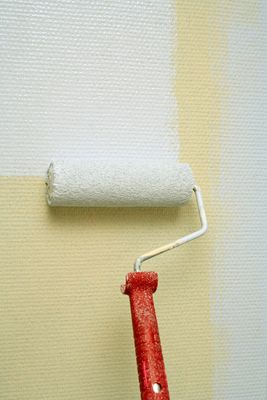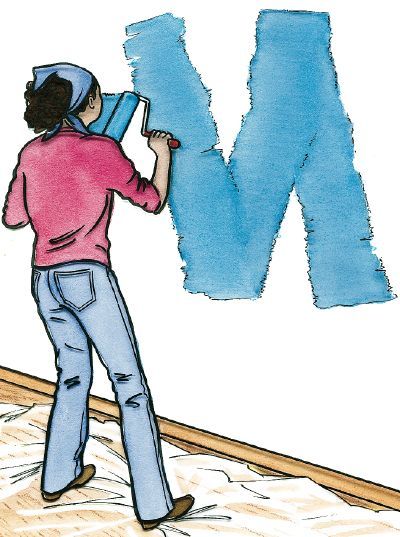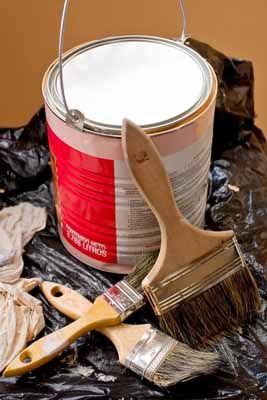Textured Walls
When a wall is textured or rough-troweled, it will require more paint than if it were a smooth wall. This is because the texture represents added surface to be covered, even though it does not contribute to the size of the area. Just how much more surface area there is depends on just how textured the surface is, but for medium-rough, porous, or previously unpainted walls, you can safely estimate 300 to 350 square feet of coverage from a gallon of paint.
Doors and Windows
Most walls have doors or windows or other areas that are not painted. If the nonpainted area is a single window or door, ignore it in your calculations. Two or three windows, a door and a window, multiple sliding doors, or a fireplace reduce the paint you'll need. By how much? Multiply the lengths by the widths of these nonpainted areas to get the total square footage that you can subtract from your overall surface figures, or you can subtract about 15 square feet for typical windows and 21 square feet for typical doors. (These figures also can be used to estimate the paint you'll need for each if you plan to use a different color or surface finish.) If you're painting the ceiling, figure its square foot area at width times length, too.
Speed Factor
Estimating the time you'll have to put in on any given paint project is less precise. Some people work faster than others, so there's no way to estimate individual differences in speed. On the average, you should be able to cover about 120 square feet of flat surface in about an hour. For bare wood or plaster, figure about 100 square feet. In a typical 12 X 15-foot room, you're likely to spend four or five hours on the job, including trim work, for the first coat. The second coat, if it's necessary, will go faster, but you'll have to wait for the first coat to dry, anywhere from 2 to 36 hours.


